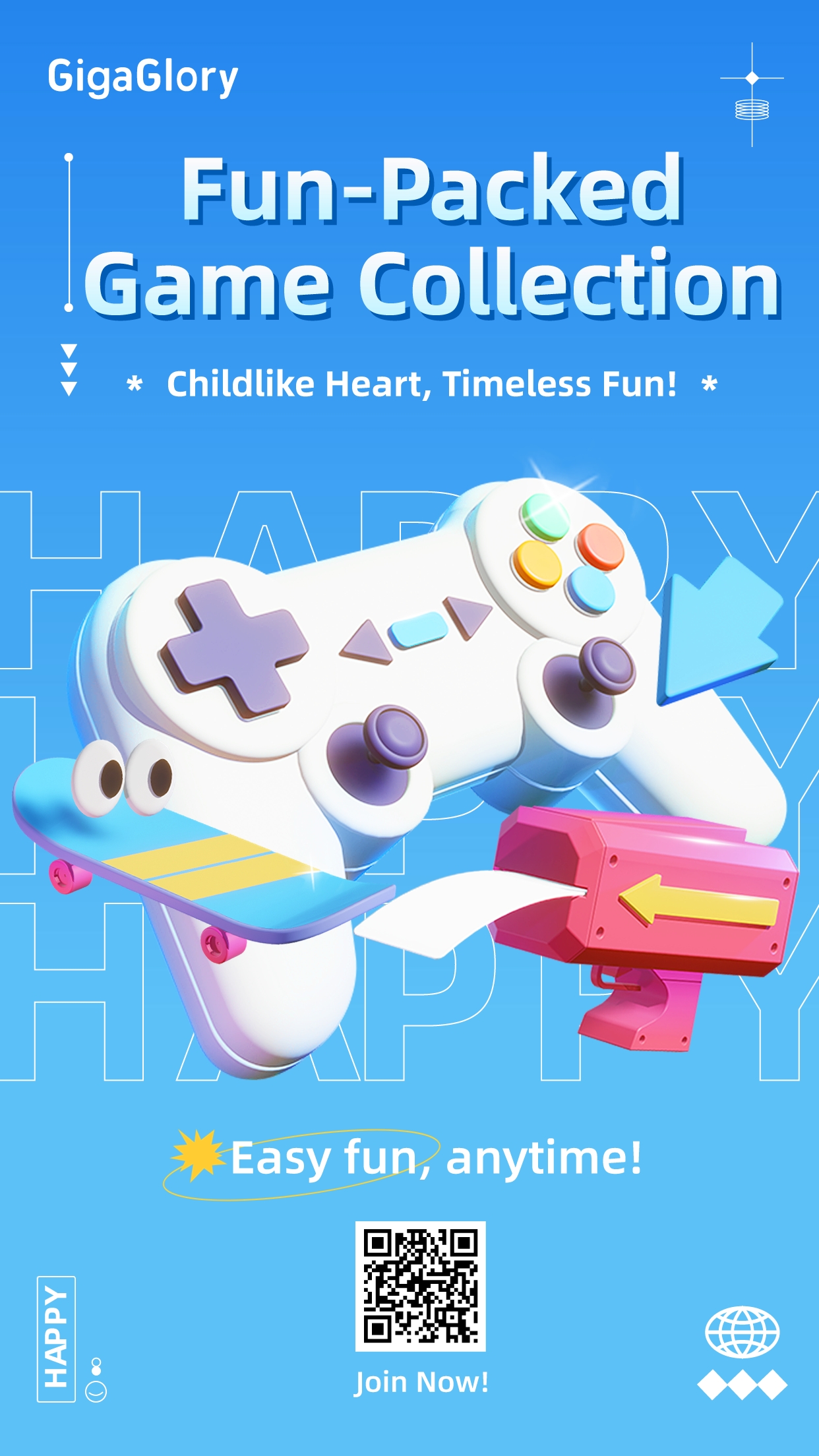Creative Games Kids Actually Want to Play (Yes, They’re Educational Too)
Look, we’ve all been there—trying to sneak some learning into playtime without it feeling like homework. But what if the games your kids beg to play were secretly sharpening their brains? Welcome to 2024, where creative games aren’t just about colors and stickers—they’re clever little traps that make learning fun. Think puzzles that tickle logic, worlds that demand problem-solving, and storytelling tools that sneak grammar in through the back door.
This isn’t about boring drills or animated worksheets. It’s about Minecraft modding, digital art jams, and narrative adventures where spelling matters if you want your character to survive the jungle.
Why Boring Won’t Fly in 2024
Kids in Venezuela, same as anywhere, have one sniff of "educational" and they bounce. But twist it. Make it loud, make it messy in a good way, make it *creative*. Suddenly that brain? It’s wide open. The trick is to ditch the old playbook where “edutainment" meant singing the alphabet over pixelated fruit.
Now, creativity leads the charge. And that’s where educational games earn their place—not by screaming “I’M TEACHING YOU!" but by being so engaging, learning happens on mute.
Tinkercad: Where Doodling Becomes 3D Engineering
Say you hand a kid a pencil. They draw a car. Cool. Now hand them Tinkercad. They build a car—virtual, movable, measurable, exportable into 3D printers if you’ve got access (shoutout to community tech centers in Caracas making this happen).
No equations. No pop quizzes. Just creativity with physics and spatial math sneaking in. Rotating a cube? That’s geometry. Balancing parts? Intro engineering. And the interface is smooth—more like finger painting than CAD nightmare.
- Lets kids model simple objects using drag-and-snap blocks
- Teaches scale, proportion, and symmetry organically
- Total free access—no subscription traps
Proko for Tiny Artists (or Future Muralists)
Not every kid loves code. Some want to *draw*. Enter Proko’s younger sibling vibes—cartoony, expressive, full of energy. These games don’t just say “draw a flower"—they guide through motion, proportion, anatomy basics, all with that playful edge.
We’re seeing a rise in drawing-based games in Latin America, possibly due to mobile accessibility and lower data needs—important for users juggling inconsistent bandwidth in places like Maracaibo or Valencia.
Art as learning? Yep. Hand-eye coordination, visual memory, emotional expression—all coded into sketch challenges.
Celeste Remix: Platforming with a Purpose
Now this one’s a curveball—on the surface? Hardcore precision platformer. Hidden layer? Emotional regulation. Resilience. Narrative depth. And okay, full bias, I love Celeste. But the fan-made “delta force trailer" remix levels? Absolutely wild.
Some fans mashed the aesthetic with military themes, sharp audio cuts, tactical UI elements. Totally unofficial, floating in forums and mod hubs. It creates a jarring but fascinating contrast—meditative platforming with war-movie vibes.
Why include it here? Because it shows how players—kids, teens—are not just consuming games. They’re recombining. Remixing. Telling new stories from old engines. That’s creative literacy.
Human: Fall Flat—Chaotic Team Building With Logic Leaks
Silly. Glitchy. Physically cursed characters flopping down cliffs. But get two or more brains working together here, and something beautiful happens: teamwork, spatial reasoning, trial-and-error thinking. All wrapped in pure laughter.
No voice chat? Hand signals in splitscreen. Lag in Venezuela’s net peaks? Play local. And since puzzles aren’t fixed—you can approach every obstacle 5 ways—it rewards imagination, not memorization.
| Game | Creative Boost? | Educational Core | Data-Friendly? |
|---|---|---|---|
| Tinkercad | ★★★★★ | STEM spatial skills | Yes |
| Duolingo ABC | ★★★☆☆ | Literacy prep | Yes |
| Minecraft: Education | ★★★★☆ | Systems thinking | Variable |
| Crayon Physics | ★★★★★ | Physics basics | Yes |
Gris & the Quiet Power of Calm Gaming
You want emotional safety? Something slow? Enter games that border on relaxing asmr games—but deeper. Gris is one. Minimal text, music that breathes, colors that emerge as your character heals. No timers. No fails. No jump scares.
Perfect for kids after a long school day, power interruptions, or family stress. Not all learning is active. Some cognition grows best in quiet. This isn’t idle entertainment. It’s emotional design, sensory integration, and symbolic storytelling—all in a watercolor skin.
A lot of parents in Venezuela don’t realize calm games are still *doing* work up there. Reducing anxiety isn't fluff. It's cognitive hygiene.
Osmo: Real-World Tangibility Meets Screen Play
Kids touching screens 24/7? Yeah, we’re past panic mode. Osmo brings back the table. Literally. Uses a reflector over your iPad, so physical blocks, letters, or puzzle pieces interact with the digital world.
The creative twist? You build math equations with real tiles. Spell words with wooden letters. Solve drawing prompts with paper and pencil while the app watches. Hybrid magic. Also lowers screen fatigue, big win for eye health.
NieR: Replica for Teens Who Brood (in 4 Languages)
Okay, not a “kid’s game," but for older siblings or young teens hungry for deep narrative—especially Spanish-first players dabbling in English—NieR automata’s mod scene is quietly revolutionary.
Fans have made full dub swaps, poetic subtitles, even delta force trailer intros spliced into intros. The story explores identity, empathy, machine consciousness—complex but digestible themes. Pair that with music that sticks in the head, and you’ve got engagement on lock.
Creative literacy + language learning? Underrated combo.
ASMR in Gamification: Why It Works
We’re not talking whispering over potato chips here. True relaxing asmr games use audio layering—the hum of wind through digital trees, the soft crinkle of pixelated paper being folded, the rhythm of a character’s steady steps through snow.
In countries where stress levels spike due to economic strain or blackout schedules, sensory-calming games offer real cognitive reset. It's neurofeedback via joystick. Not soft—strategic.
Creative Problem Solvers > Correct Answers
We’re past the era where learning meant picking “A" or “B." 2024 values idea generation. And games are ahead of schools on this.
A game like Knights and Brides (huge on Telegram groups in Venezuela right now) forces trade negotiation, limited resource use, diplomacy—all in simple graphics, Spanish/English toggle. Creative solutions beat brute force. One wrong treaty? Game shifts. That’s systems thinking.
We don’t praise wrong answers in school. But games do. Failure = retry = refinement. Growth cycle.
Local Flavor: How Venezuelan Kids Hack Gameplay
Limited bandwidth? Players there optimize early. They’ll favor low-poly art, offline mode, minimal voice. But they remix like mad. You’ve got Minecraft worlds themed around Angel Falls, Slenderman legends with El Silbón vibes, delta force trailer mods with tropical jungle backdrops and reggaeton drops.
Creative resilience, plain and simple. Kids using games to re-envision their context, not just escape it.
Beyond the Screen: Creative Games That Need Zero Tech
Holding it down because routers are down again? Here’s how we go low-tech with creative games:
- Invent-a-Game Hour: Give kids three random objects. Make a rule-based game using all. Score for absurdity and playability.
- Shadow Theater: Flashlight, cardboard, fabric scraps. Tell a wordless story through silhouettes. Boosts non-verbal expression and narrative flow.
- “What If" RPG: No dice, no books. “What if dogs ran the government?" Build it together, scene by scene.
No internet? Zero issue. The creativity muscle isn’t online. It’s already humming in that ten-year-old brainstorming dragon taxes.
The Risk: Not All “Creative" Games Deliver
Watch out. Some apps slap on “creative" like ketchup on a salad and charge for gems. Real educational games let you mess up, wander off-script, save progress. They avoid manipulative timers, loot boxes, fake urgency.
Check for:
Key Points to Identify Genuine Creative + Educational Balance:
- Multiple paths to solve challenges
- No “only one right way" structure
- Allows content creation (build maps, stories, sounds)
- Minimal intrusive ads—zero paywalls on creative features
- User-generated mods or shareable content (big indicator)
Final Round-Up: Top 10 Creative/Educational Hybrids for 2024
- Minecraft: Education Edition – World-building meets collaboration and logic
- Tinkercad – Free 3D modeling heaven for tiny inventors
- Osmo Little Genius – Tangible meets digital, great for ages 4-8
- Proko Sketch Challenges – Learn figure drawing playfully
- Gris – Emotional, artistic platformer with zero stress
- Crayon Physics Deluxe – Draw machines, defy gravity, solve puzzles
- Human: Fall Flat – Absurdist problem-solving with pals
- Duolingo ABC (Spanish version) – Foundational literacy in playful design
- Knights and Brides (Local mods popular) – Resource negotiation & creativity
- NieR Automata Mod Packs – For deep-think teens, bilingual benefits
Bonus nod to user-made delta force trailer experiences in platform mods—clunky sometimes, jarring, but proof that kids everywhere, including Venezuela, crave narrative depth AND explosive energy. Hybrid tastes.
Relax, the Learning Is Happening (Even If You Can’t See It)
Bottom line? The old line between fun and learning is a blurry smudge now. When a kid builds a bridge in Tinkercad or survives a relaxing asmr games forest with only sound cues, neurons are *firing*. And in contexts like Venezuela—where resources shift day to day, where joy needs to be crafted, not bought—creative games are lifelines.
Not fancy ones. Not even fully digital ones. The most powerful tool isn’t the game itself. It’s the pause after—when the kid says, “Can I show you what I made?"
Conclusion: Play Is Serious (and Should Stay Silly)
What kids in Venezuela teach us in 2024 is this: creativity thrives in constraint. No fancy gear? Cool. They’ll use Telegram to share handmade puzzle games, record audio tales on broken phones, turn Minecraft into protest art or fantasy escape, sometimes within the same day.
The games that win aren’t the priciest or flashiest. They’re the flexible ones. The open-ended. The ones where a delta force trailer mood cut can morph into a poetic quest without breaking stride.
Real education in 2024 looks like a kid tweaking a game they didn’t make, turning it into something new, surprising, personal. That’s the core of both creativity and critical thinking.
So let the educational games keep pretending they’re just for fun. Meanwhile, behind the laughter, under the music of relaxing asmr games, the learning machine never blinks.
Keep playing. Keep modifying. And if your power goes out tonight—tell a story. It’s the oldest creative game we’ve got.



